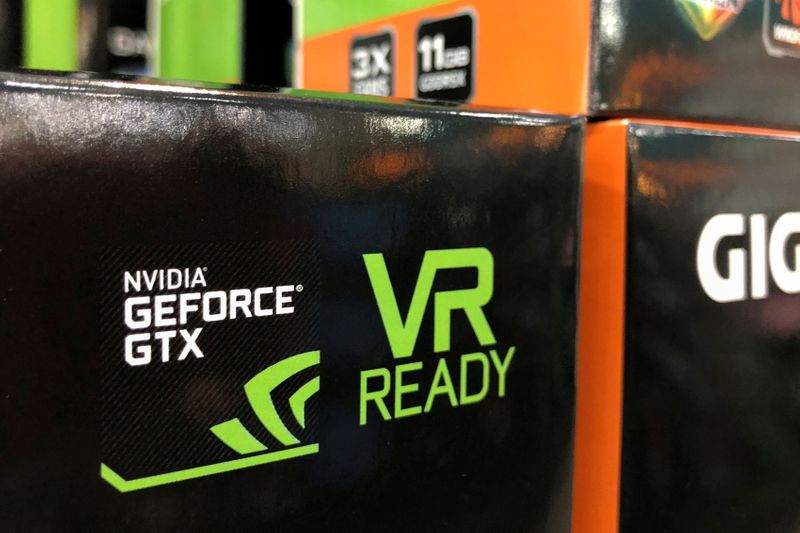Two 59%+ winners, four above 25% in Aug – How this AI model keeps picking winners
On Tuesday, BofA Securities maintained a positive stance on NVIDIA (NASDAQ:NVDA) shares, as analyst Vivek Arya confirmed a Buy rating and a steady price target of $190.00. This aligns with the broader analyst consensus, as InvestingPro data shows analyst targets ranging from $120 to $220, with a strong buy recommendation rating of 1.31. Arya highlighted strong supply and demand indicators that bode well for NVIDIA’s future performance, supported by the company’s impressive gross profit margin of 75.86%.
From the supply perspective, Arya noted that key components such as foundry/packaging from TSMC and high-bandwidth memory from companies like Hynix and Micron (NASDAQ:MU) are expected to support a doubling in artificial intelligence (AI) sales year-over-year in calendar year 2025 (CY25). This growth projection surpasses the consensus estimate of approximately 61% year-over-year growth in NVIDIA’s data center sales. The company’s current momentum is evident in its remarkable 152.44% revenue growth over the last twelve months, according to InvestingPro data, which also reveals 18 additional key insights about NVIDIA’s growth potential.
On the demand side, Arya pointed out that top cloud customers have increased their capital expenditure (capex) projections for CY25 by 30-40% to over $360 billion. This surge in spending is supported by substantial investments in AI from the European Commission, which has committed over $200 billion, and France, with a commitment exceeding $100 billion. Additionally, the industry has seen a capex-positive impact from DeepSeek, with increased spending in China as well.
Despite recent reports suggesting potential challenges for NVIDIA’s shipments to China, which account for 12% of the company’s trailing twelve months (TTM) sales across gaming, automotive, and data center sectors, Arya expects robust demand from non-China markets to compensate for any potential setbacks.
NVIDIA’s stock continues to be viewed favorably by BofA Securities, with expectations of significant growth in the AI sector and strong capital investment trends underpinning this optimism. The company’s strategic position in the supply chain and its expansive market opportunities are key factors in sustaining its positive outlook. With a perfect Piotroski Score of 9 and an overall "GREAT" financial health rating from InvestingPro, NVIDIA demonstrates strong fundamentals to support its $3.17 trillion market capitalization. For deeper insights into NVIDIA’s valuation and growth prospects, investors can access the comprehensive Pro Research Report, available exclusively to InvestingPro subscribers.
In other recent news, NVIDIA is set to release its earnings report, with analysts from Truist Securities, Piper Sandler, Morgan Stanley (NYSE:MS), and Evercore ISI expressing varied expectations. Truist Securities anticipates NVIDIA will surpass consensus expectations for its fourth-quarter results and align its first-quarter guidance with current estimates, maintaining a Buy rating with a $204 price target. Piper Sandler also expects NVIDIA to exceed revenue estimates by approximately $1.8 billion for the January quarter, reaffirming an Overweight rating with a $175 target. Morgan Stanley, while acknowledging some market concerns, maintains an Overweight rating with a $152 target, noting optimism for guidance in the upcoming quarter. Evercore ISI holds an Outperform rating with a $190 target, despite investor concerns about potential impacts on NVIDIA’s performance.
Additionally, NVIDIA has initiated legal action against EU antitrust regulators over their scrutiny of its acquisition of AI startup Run:ai. The lawsuit challenges the EU’s decision to review the deal, claiming it oversteps regulatory authority. Although the transaction was approved in December, NVIDIA’s legal move could influence future regulatory oversight on similar mergers. The case references a European court ruling limiting the Commission’s power to accept referrals of deals lacking a European dimension. This development highlights ongoing tensions between large tech companies and regulatory bodies over merger controls.
This article was generated with the support of AI and reviewed by an editor. For more information see our T&C.
